
Biosensors-Basel
Scope & Guideline
Unlocking the future of analytical and biomedical advancements.
Introduction
Aims and Scopes
- Medical Diagnostics:
Research aimed at developing biosensors for the detection of various medical conditions, focusing on biomarkers, infectious diseases, and metabolic disorders. - Environmental Monitoring:
Studies that involve the use of biosensors for the detection of pollutants, toxins, and pathogens in environmental samples, highlighting the importance of sustainable practices. - Food Safety:
Papers that discuss biosensors designed to detect contaminants, pathogens, and chemical residues in food products, ensuring consumer safety and regulatory compliance. - Nanotechnology Integration:
Research that explores the incorporation of nanomaterials in biosensor design to enhance sensitivity, specificity, and overall performance. - Microfluidic Technologies:
Development and application of microfluidic systems for biosensing, enabling high-throughput analysis and point-of-care diagnostics. - Wearable Sensors:
Innovations in wearable biosensing devices that monitor physiological parameters in real-time, contributing to personalized healthcare.
Trending and Emerging
- CRISPR-Based Biosensors:
An increasing number of studies are focusing on CRISPR technology for biosensing applications, highlighting its potential for precise and rapid detection of nucleic acids. - Artificial Intelligence Integration:
The incorporation of AI and machine learning techniques in biosensor development is trending, enabling improved data analysis and detection capabilities. - Point-of-Care Diagnostics:
There is a growing emphasis on the development of portable and user-friendly biosensors for point-of-care applications, especially in the context of infectious diseases and public health. - Environmental and Food Safety Applications:
Research is increasingly directed towards biosensors that address environmental monitoring and food safety, reflecting societal concerns over health and sustainability. - Wearable Health Monitoring Devices:
The trend towards wearable biosensors for continuous health monitoring is gaining momentum, driven by advancements in materials and miniaturization technologies. - Nanomaterials in Biosensing:
Research focusing on the application of nanomaterials to enhance biosensor performance, including sensitivity and selectivity, is on the rise.
Declining or Waning
- Traditional Chemical Sensors:
There has been a noticeable decrease in papers focusing solely on traditional chemical sensors, as the field increasingly pivots towards more advanced biosensing technologies that incorporate biological elements. - Basic Biosensor Platforms:
Research centered on simple or conventional biosensor platforms is declining, giving way to more sophisticated designs that leverage nanotechnology and microfluidics. - Generalized Diagnostic Approaches:
The trend towards highly specific and tailored biosensing techniques is overshadowing generalized diagnostic methods that do not utilize advanced technologies.
Similar Journals

Brazilian Journal of Analytical Chemistry
Advancing Analytical Insights in Latin AmericaBrazilian Journal of Analytical Chemistry, published by VISAO FOKKA COMMUNICATION AGENCY, serves as a vital platform for those engaged in the field of analytical chemistry, especially within the Latin American context. With an ISSN of 2179-3425 and an E-ISSN of 2179-3433, this journal aims to promote high-quality research and advancements in analytical methodologies, instrumentation, and applications spanning from 2010 to the present. Although it currently holds a Q4 rank in Analytical Chemistry by Scopus and is placed at the 24th percentile, its commitment to open access publishing provides invaluable opportunities for widespread dissemination of knowledge, catering to researchers, professionals, and students alike. The journal's editorial board comprises emerging and established experts aiming to bridge gaps in analytical chemistry research, particularly in a Brazilian and broader South American context. Situated in São Paulo, Brazil, the journal's role in fostering innovation and collaboration in analytical techniques makes it an essential resource for the academic community.

Progress in Biomedical Engineering
Pioneering advancements at the intersection of medicine and technology.Progress in Biomedical Engineering, published by IOP Publishing Ltd, is a premier open-access journal that serves as a vital platform for the dissemination of innovative research in the field of biomedical engineering. With an impressive Q1 classification in the Biomedical Engineering category for 2023, this journal has established itself as a significant contributor to the advancement of engineering solutions that improve healthcare outcomes. Recognized for its high-quality and impactful publications, it ranks 51st out of 303 in its field on Scopus, placing it in the 83rd percentile. The journal aims to foster interdisciplinary collaboration and introduce pioneering methodologies and technologies that bridge the gap between engineering and medicine. By providing a pathway for rapid communication of fundamental and applied research, Progress in Biomedical Engineering is dedicated to shaping the future of healthcare technology. Access to its content ensures that researchers, professionals, and students remain at the forefront of biomedical innovation.

BioChip Journal
Pioneering Research at the Intersection of Bioengineering and TechnologyBioChip Journal, published by the Korean Biochip Society (KBCS), is a renowned academic platform dedicated to advancing the fields of bioengineering, biomedical engineering, biotechnology, and electrical and electronic engineering. With its ISSN 1976-0280 and E-ISSN 2092-7843, this esteemed journal has established itself as a valuable resource for researchers, professionals, and students alike, providing them with cutting-edge research and insights since its inception in 2008. The journal has earned a commendable standing in the academic community, achieving Q2 ranking across key categories, thereby placing it amongst the top-tier publications. With its impressive Scopus rankings, including a top 10% position in Electrical and Electronic Engineering and a strong showing in both Biomedical Engineering and Biotechnology, BioChip Journal plays a vital role in disseminating innovative biochip technologies and applications. The journal continues to invite groundbreaking studies and reviews that promote the interdisciplinary collaboration essential for the future of biochip research, ultimately contributing to advancements in healthcare, diagnostics, and therapeutics.

MICROCHIMICA ACTA
Championing Quality Research in Analytical ChemistryMicrochimica Acta is a prestigious journal in the field of Analytical Chemistry, published by Springer Wien. With a history spanning nearly a century, since its inception in 1926, this journal continues to play a significant role in advancing chemical research, currently ranking #18 out of 156 in its category according to Scopus, placing it within the top 88th percentile. Microchimica Acta publishes high-quality, peer-reviewed articles that cover a diverse range of topics in analytical techniques, instrumentation, and methodologies. Researchers and professionals alike benefit from its comprehensive scope, which fosters innovation and knowledge-sharing in the analytical chemistry community. Despite its non-open-access model, the journal is committed to disseminating critical findings that drive progress in academia and industry, ensuring its relevance in a continually evolving field. As an essential resource, Microchimica Acta not only contributes significantly to scholarly discourse but also provides a platform for emerging concepts and practices in the analytical landscape.
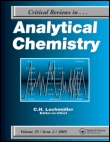
CRITICAL REVIEWS IN ANALYTICAL CHEMISTRY
Synthesizing Knowledge for a Brighter Scientific Future.Critical Reviews in Analytical Chemistry, published by Taylor & Francis Inc, stands as a pivotal journal in the field of analytical chemistry, contributing significantly to its advancement since its inception in 1989. With an impressive Q1 ranking in the 2023 analytical chemistry category, it positions itself among the top 15 journals in the field, reflecting its high impact and relevance, as evidenced by a 90th percentile Scopus rank. This esteemed journal is dedicated to publishing comprehensive reviews that synthesize current research and emerging methods in analytical techniques, making it an invaluable resource for researchers, professionals, and students alike. With the goal of fostering innovation and collaboration, Critical Reviews in Analytical Chemistry continues to address challenges and breakthroughs within the sphere of analytical methodologies, ensuring its authors and readers remain at the forefront of scientific discovery.
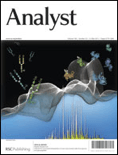
ANALYST
Elevating Knowledge in the Heart of Chemical ResearchANALYST, published by the Royal Society of Chemistry, stands as a prestigious journal in the fields of Analytical Chemistry, Biochemistry, Electrochemistry, Environmental Chemistry, and Spectroscopy. Esteemed for its rigorous peer-review process and influential contributions to the advancement of scientific knowledge, the journal has been a vital resource for researchers and professionals since its inception in 1876. With an impressive Scopus ranking that places it in the top quartile for several chemical disciplines, it specifically ranks #12 in Spectroscopy and #31 in Analytical Chemistry, reflecting its robustness and relevance in the analytical sciences. Though currently not an Open Access publication, ANALYST provides valuable insights and cutting-edge research that help drive innovation and discovery in various scientific realms. Researchers and students alike will benefit from its commitment to disseminating high-quality research that addresses contemporary challenges and promotes interdisciplinary collaboration.

TALANTA
Elevating Standards in Analytical MethodologiesTALANTA, published by Elsevier, is a premier international journal that serves as a vital platform in the field of analytical chemistry. Since its inception in 1958, TALANTA has provided a comprehensive forum for the dissemination of groundbreaking research and developments in chemical analysis, spanning a wide array of topics including biochemistry and spectroscopy. With an impressive impact factor and ranking in the Q1 quartile within its category for 2023, it is ranked #12 out of 156 journals in Analytical Chemistry by Scopus, placing it among the most influential journals in its field. Researchers, professionals, and students benefit from its stringent peer-review process and high-quality content that drives advancements in analytical methodologies and applications. TALANTA's commitment to fostering innovation and excellence in research makes it an indispensable resource for anyone at the forefront of scientific inquiry.
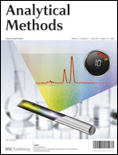
Analytical Methods
Connecting Ideas, Transforming PracticesAnalytical Methods, published by the renowned Royal Society of Chemistry, is a distinguished journal that has been serving the scientific community since its inception in 2009. Specializing in the fields of Analytical Chemistry, Chemical Engineering, and General Engineering, this journal holds a reputable position with an impressive Q2 ranking in three relevant categories as of 2023. With its focus on innovative methodologies and advanced applications in analytical science, it aims to disseminate cutting-edge research and foster dialogue among researchers, professionals, and students. Although it is not an open access publication, it is accessible worldwide and provides critical insights into the latest developments in analytical techniques and their engineering applications. The journal also ranks highly in pertinent Scopus categories, such as being in the 77th percentile for General Engineering and 61st percentile for Analytical Chemistry, underlining its significance in advancing knowledge and practical applications in these fields. By participating in this journal, readers can expect to engage with high-quality research that influences the future of analytical practices and chemical engineering.
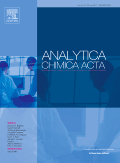
Analytica Chimica Acta
Pioneering insights in analytical and environmental chemistry.Analytica Chimica Acta is a prestigious peer-reviewed journal published by ELSEVIER, renowned for its significant contribution to the fields of analytical chemistry, biochemistry, environmental chemistry, and spectroscopy. Established in 1947, this journal has solidified its reputation, reflected in its impressive impact factors and Scopus rankings, including a Q1 classification in Analytical Chemistry and Spectroscopy, and a Q2 ranking in both Biochemistry and Environmental Chemistry. With its comprehensive scope, Analytica Chimica Acta aims to publish innovative research, critical reviews, and technical notes that advance the understanding and application of analytical methods. As an essential resource for researchers, professionals, and students alike, it encourages the dissemination of high-quality research that addresses contemporary challenges in chemical analysis and promotes interdisciplinary collaboration. While the journal operates primarily on a subscription basis, it also offers unique opportunities for authors to reach a broad audience and engage in the global scientific discourse.
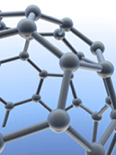
Annual Review of Analytical Chemistry
Unveiling Innovations in Chemical AnalysisAnnual Review of Analytical Chemistry, published by Annual Reviews, is a premier journal that serves as a critical resource in the field of analytical chemistry, providing comprehensive and cutting-edge reviews that synthesize recent advancements and pivotal research findings. With an impressive impact factor and ranked Q1 in both Analytical Chemistry and Miscellaneous Medicine, it stands as a leader in disseminating knowledge that spans the intricacies of chemical analysis, enhancing the scientific discourse within the community. Available in both print (ISSN: 1936-1327) and online (E-ISSN: 1936-1335), the journal is accessible to a wide audience, fostering innovation and collaboration among researchers, professionals, and students alike. Its scope includes the converged years from 2008 to 2024, showcasing its commitment to providing relevant and timely insights that impact practice and education in analytical techniques, methodologies, and applications. The Scopus rank of #6 out of 156 in Analytical Chemistry, placing it in the 96th percentile, underscores its significance and the high regard in which it is held. As you explore the journal's offerings, you will find a wealth of knowledge that not only informs but inspires future discoveries in the realm of analytical chemistry.